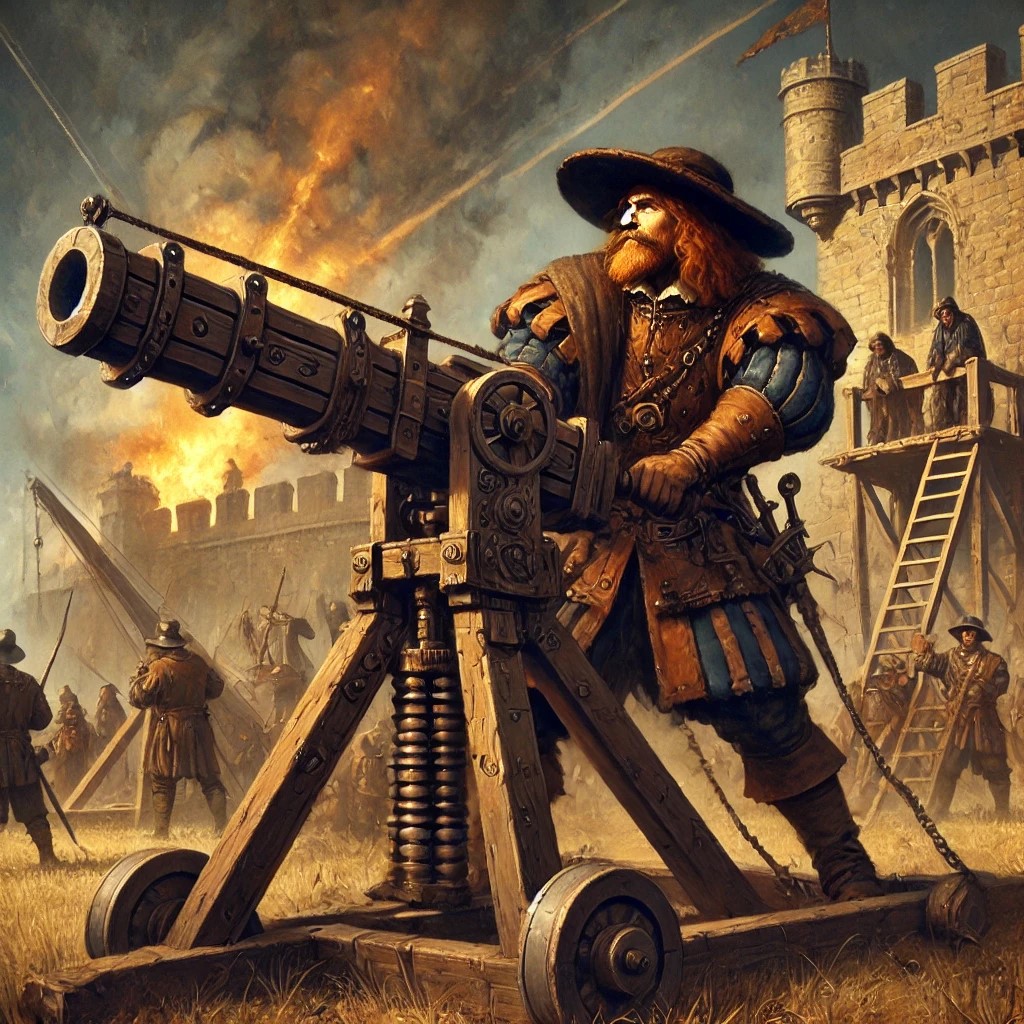Artillerist I (sage ability)
Artillerist I is an amateur-status sage ability in the study of Martial Discipline, which provides the ability to load, aim and fire ballista siege weapons. This includes knowledge in how to mount the weapon on stable ground or ready it for mobility if needed; providing maintenance and ensuring that all components are in working order; winching, winding or resetting weapons into the primed position; and how to safely fire the weapon.
Contents
As well as the abilty to load and fire siege weapons such as catapults or trebuchets. The skill does not include, however, the ability to aim these latter engines, which requires an individual with the artillerist II sage ability. Typically, when part of a crew managing a large siege engine, persons with artillerist I are called "handlers." One point of martial discipline or artillerist I knowledge is sufficient to qualify as an "apprentice" with regards to the loading and firing of these engines.
Maintenance
This includes inspections to determine if a siege engine's wooden frames have warped, if the ropes have frayed, if there are any weaknesses in the fastenings and the proper storage and accessibility of projectiles. The characer can sharpen ballista bolts and oil them for easier penetration, even coating them with pitch for incendiary attacks. They can manage draft animals — oxen, draught horses and mules — well enough to drag the weapon, so that they can lead these animals while walking. They do not possess the ability to drive such animals like a teamster.
Battlefield Communication
While artillerists rely on shouted commands, drummers and signal horns for coordination, they have enough understanding of flag communication to permit them to know when to prepare for firing, when to hold and when to release. Since artillerist I does not involve aiming for indirect fire, these signals would not include advanced targeting instructions but instead serve as general cues for synchronisation. A raised flag could mean "ready," a downward motion could indicate "load," and a horizontal sweep might signal "fire."
Within a crew, flags are less common, but in sieges where multiple engines are coordinated for maximum impact, visual signals helped ensure that ballistae, catapults or trebuchets fired in sequence or volleys. Given the reliance on line-of-sight communication, this is most useful when distance or terrain made direct shouting ineffective. However, flags are more likely to be used by commanders directing multiple batteries rather than by individual artillerists themselves.
